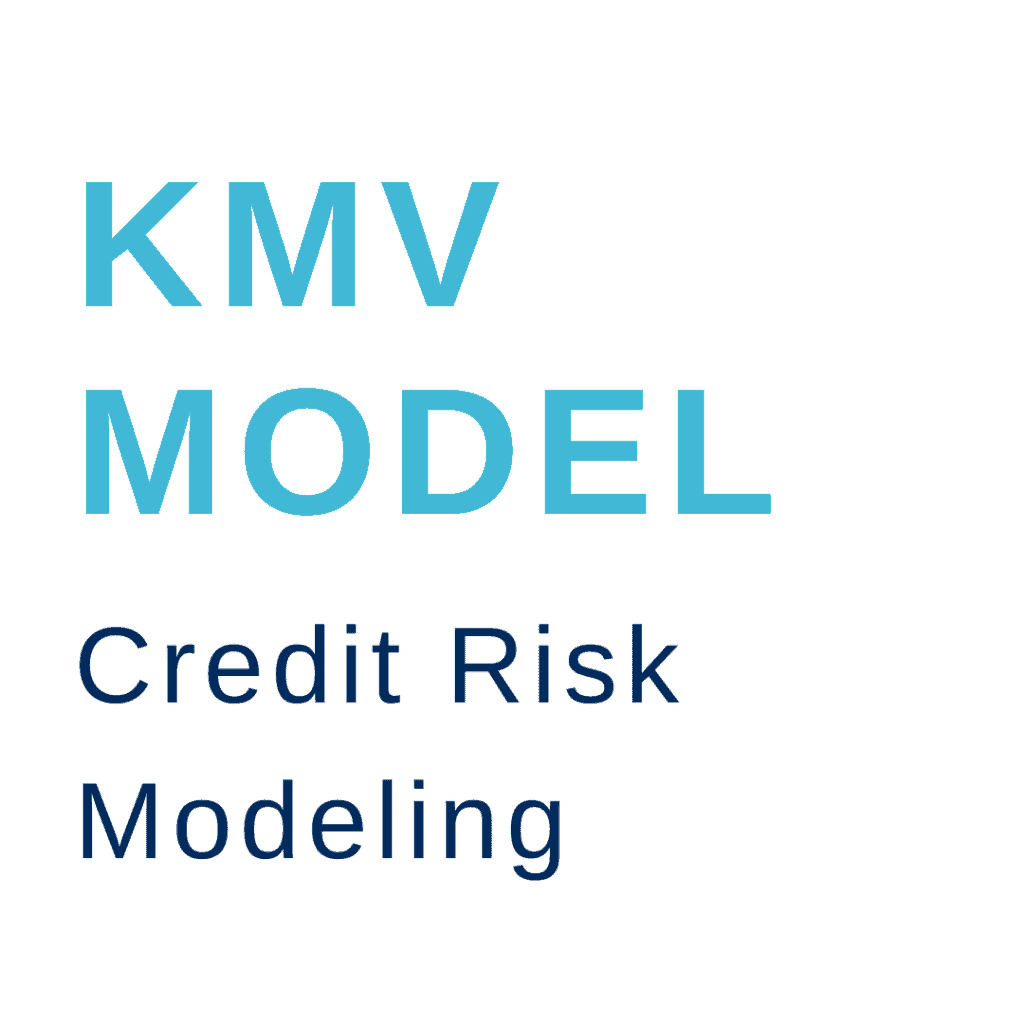The KMV model is a credit risk measurement model developed by Kealhofer, McQuown, and Vasicek. This model is widely used for estimating the probability of default (PD) of a firm.
It builds upon and refines the Merton Model by incorporating market information and focusing on a shorter time horizon, making it more applicable to real-world scenarios.
The core concept in the KMV model is the ‘distance to default,’ a measure that indicates how far a company is from defaulting. It’s calculated based on the company’s asset value, its volatility, and the current debt obligations.

Unlike the original Merton Model, the KMV model uses market data (like equity prices and their volatility) to infer the value and volatility of a company’s assets. This approach is believed to reflect the company’s current financial situation more accurately. This is extremely important when considering and authorising an asset to be part of a portfolio’s Strategic Asset Allocation.
The KMV model defines a ‘default point,’ which is typically higher than just the face value of short-term debt. This point is often set as a combination of short-term liabilities and a portion of long-term debts.
The KMV model employs an empirical approach to estimate the probability of default. It uses historical data on defaults and market information to refine the estimation of the default probability.
The model also factors in Exposure at Default (EAD) and Loss Given Default (LGD) to estimate potential losses in case of default.
The KMV model is extensively used by banks and financial institutions for credit risk assessment, portfolio management, and regulatory compliance.
The KMV model is more data-intensive and relies on robust market and historical data for accurate results. It’s particularly valuable for evaluating the credit risk of publicly traded companies, where market data is readily available.
Suppose we have a publicly-traded company, “ACC Innovations Inc.” The current market value of its equity is $200 million, and the equity’s volatility is estimated to be 30%. The company’s total liabilities are $150 million. We will assume the default point to be 50% of the total liabilities, which is a common assumption. The risk-free interest rate is 2%.
We want to calculate the Distance to Default (DD) for ACC Innovations Inc., which is an indicator of the company’s likelihood of default.
The first step is to estimate the market value of the company’s assets (A) and the asset volatility (σA). These are estimated using the Black-Scholes-Merton (BSM) model formulas.
The Distance to Default is calculated as follows:
The PD can be approximated using the DD and the standard normal cumulative distribution function.
Now, let’s implement this in Python, noting that the estimation of asset value and asset volatility from equity value and equity volatility requires solving a system of equations derived from the Black-Scholes-Merton model.
import numpy as np
import scipy.stats as si
from scipy.optimize import fsolve
# Parameters
E = 200e6 # Market value of equity
sigma_E = 0.30 # Volatility of equity
D = 150e6 # Total liabilities
DP = 0.50 * D # Default point (50% of total liabilities)
T = 1 # Time horizon (1 year)
r = 0.02 # Risk-free interest rate
# Function to estimate Asset Value (A) and Asset Volatility (sigma_A)
def estimate_asset_value_and_volatility(x):
A, sigma_A = x
# Black-Scholes-Merton model equations
d1 = (np.log(A / DP) + (r + sigma_A**2 / 2) * T) / (sigma_A * np.sqrt(T))
d2 = d1 – sigma_A * np.sqrt(T)
equity = A * si.norm.cdf(d1) – DP * np.exp(-r * T) * si.norm.cdf(d2)
equity_vol = A * sigma_A * si.norm.cdf(d1) / E
return [equity – E, equity_vol – sigma_E]
# Estimating Asset Value and Volatility
A_est, sigma_A_est = fsolve(estimate_asset_value_and_volatility, [E, sigma_E])
# Calculating Distance to Default (DD)
DD = (np.log(A_est / DP) + (r + sigma_A_est**2 / 2) * T) / (sigma_A_est * np.sqrt(T))
# Calculating Probability of Default (PD)
PD = si.norm.cdf(-DD)
print(“Estimated Asset Value:”, A_est)
print(“Estimated Asset Volatility:”, sigma_A_est)
print(“Distance to Default (DD):”, DD)
print(“Probability of Default (PD):”, PD)
Based on the KMV model calculations for ACC Innovations Inc.:
These results provide insights into the credit risk associated with ACC Innovations, Inc. The KMV Model helps in quantifying this risk, which is crucial for investors, creditors, and the company’s management.
Note: These abstract implementations are for educational purposes only.